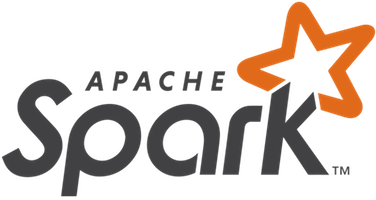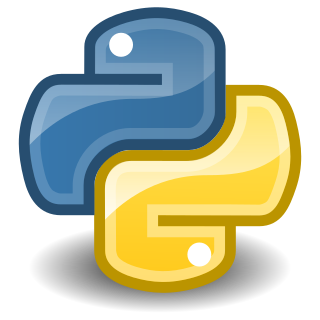The Top Tools for Data Engineering
Data engineering has become a vital process for any organization that works with data. It's the process of collecting, processing, and storing data so that it can be used for further analysis. Data engineers are responsible for ensuring that the data is clean, organized, and easily accessible. A variety of tools are available to aid in these processes. In this article, we'll take a look at some of the top tools for data engineering.
1. Apache Hadoop
Apache Hadoop is an open-source distributed computing platform that provides a framework for storage and processing of large data sets. The Hadoop ecosystem includes various tools and frameworks such as HDFS (Hadoop Distributed File System), MapReduce, Pig, and Hive. Hadoop can scale up to thousands of nodes and handle large data sets smoothly.
Apache Hadoop is ideal for handling large amounts of unstructured and semi-structured data. It stores data across multiple nodes in a distributed manner, making it accessible to multiple users and applications. Hadoop is a robust and scalable framework, making it a popular choice for data engineering.

Category: Distributed System
2. Apache Spark
Apache Spark is an open-source, distributed computing system used for large-scale data processing. It can handle batch processing, stream processing, machine learning, and graph processing. Spark is built on top of Hadoop, which makes it possible to run on Hadoop clusters. Spark's main feature is its ability to cache data in memory, which makes processing significantly faster.
Spark is a powerful tool for data engineering because of its flexibility and high speed. It offers various APIs like Spark SQL, Spark Streaming, and MLlib for data transformation and machine learning. Spark supports programming languages like Scala, Python, Java, and R.

Category: Distributed System
3. Apache Kafka
Apache Kafka is an open-source, distributed event streaming platform used to handle real-time data streams. It was developed primarily for handling high volume data streams in real-time, enabling applications to respond quickly to data changes. Kafka is used with different programming languages and supports durable writes for higher data protection.
Data engineers use Kafka as a messaging system to transport data between applications. Kafka is responsible for storing a real-time stream of records in a fault-tolerant way, allowing real-time processing of data streams. Kafka also scales horizontally so that it can handle high-volume data streams.

Category: Distributed System
4. Apache Airflow
Apache Airflow is an open-source platform to program, schedule and monitor workflows. Developed by Airbnb, it was designed to manage data pipelines. Data engineers use Apache Airflow to create a workflow that defines a sequence of tasks to be executed to produce a result. It has an easy-to-use UI that offers insights into how pipelines are created and visualizes the performance.
Apache Airflow offers a flexible approach to data engineering pipelines. With the ability to create tasks for various languages, Airflow can be used effectively to develop and maintain data processing pipelines.

Category: DataOps
5. Apache Flink
Apache Flink is an open-source, distributed stream processing framework that can process large data sets very quickly. It was designed to handle both batch and stream processing on the same engine, making it a versatile tool for data engineering. Flink is capable of processing data in real-time, which makes it ideal for applications that require low latency data processing.
Data engineers use Flink to process live data streams and gain insights into the data in real-time. It offers excellent performance and is highly scalable, making it a compelling choice for large-scale data engineering projects.

Category: Distributed System
6. Docker
Docker is an open-source tool that allows you to run applications inside containers. Containers are lightweight and isolated, which means that they can be spun up quickly and run the application in any environment. Docker is portable across multiple platforms, making it easy for data engineers to build, test, and deploy applications in different environments.
Data engineers use Docker to create an environment that can run all the necessary tools and dependencies needed to run the application. Docker is often used in conjunction with other tools, such as Apache Airflow, to create an efficient and effective data engineering pipeline.

Category: DataOps
7. Tableau
Tableau is a business intelligence and data analytics tool used for visualization and analysis of data. It offers a user-friendly interface that allows you to create dashboards, reports, and charts quickly. Tableau connects to different data sources, including Hadoop, MySQL, and Oracle.
Data engineers use Tableau for data visualization, providing a visual representation of the data that is easy to understand for the business. It is an excellent tool for exploring data and gaining insights into how to improve business processes.
![]()
Category: Data Visualization
8. Python
Python is a powerful programming language that has become a popular choice for data engineering. It offers numerous libraries and frameworks that can be used for data analysis, data manipulation and modeling. Python has a straightforward syntax, making it easy to learn and apply for data engineering tasks.
Data engineers use Python for data manipulation and modeling, building machine learning models and performing statistical analysis. Python has become an essential language for data engineering, and it continues to gain popularity due to its versatility and ease of use.

Category: Language
Conclusion
These tools can aid data engineers in the collection, processing, and analysis of data. Each tool has its own unique features and strengths to provide an efficient and effective data engineering pipeline. As the data engineering industry continues to evolve, so will the tools available to data engineers.
Whether it's Hadoop for distributed computing, Kafka for real-time streaming of data, or Tableau for data visualization, each tool can be used effectively in the data engineering process. Ultimately, the choice of tool will depend on the project requirements and the specific needs of the organization.